New Territories, Hong Kong, China – Thursday, February 3rd, 2011
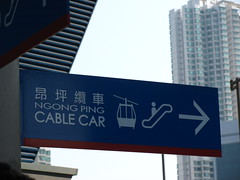 HKUST offered several tours around Hong Kong for international visiting students around the Lunar New Year holidays. This included a day-long excursion to Lantau Island to see the Po Lin Monastery and Tian Tan Buddha (AKA “the Big Buddha”) plus the Tai O fishing village. Although Lantau Island is famous for Hong Kong Disneyland, as part of the New Territories in western Hong Kong it’s mostly known among Hong Kongers as being a relatively natural, rustic, quiet place to get away from the bustle of the city. With our first destination at the top of a mountain, the journey there is certainly unforgettable. Although buses are available, we were arranged (with front of the line passes!) to take the Ngong Ping 360 cable car to the summit. The journey gives you about 25 minutes to ponder how much load the steel cable and support towers can carry.
HKUST offered several tours around Hong Kong for international visiting students around the Lunar New Year holidays. This included a day-long excursion to Lantau Island to see the Po Lin Monastery and Tian Tan Buddha (AKA “the Big Buddha”) plus the Tai O fishing village. Although Lantau Island is famous for Hong Kong Disneyland, as part of the New Territories in western Hong Kong it’s mostly known among Hong Kongers as being a relatively natural, rustic, quiet place to get away from the bustle of the city. With our first destination at the top of a mountain, the journey there is certainly unforgettable. Although buses are available, we were arranged (with front of the line passes!) to take the Ngong Ping 360 cable car to the summit. The journey gives you about 25 minutes to ponder how much load the steel cable and support towers can carry.
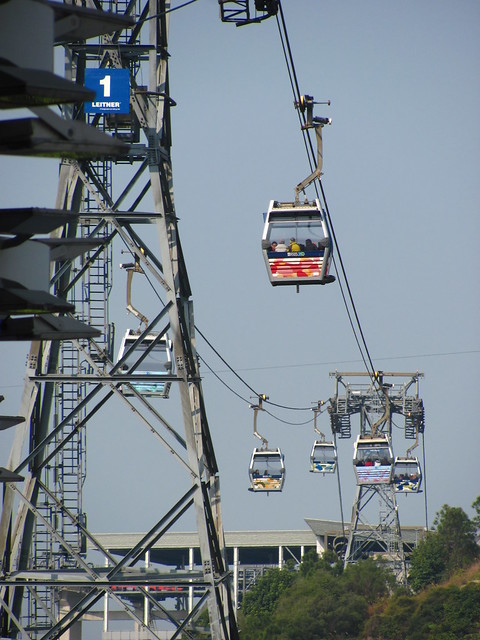
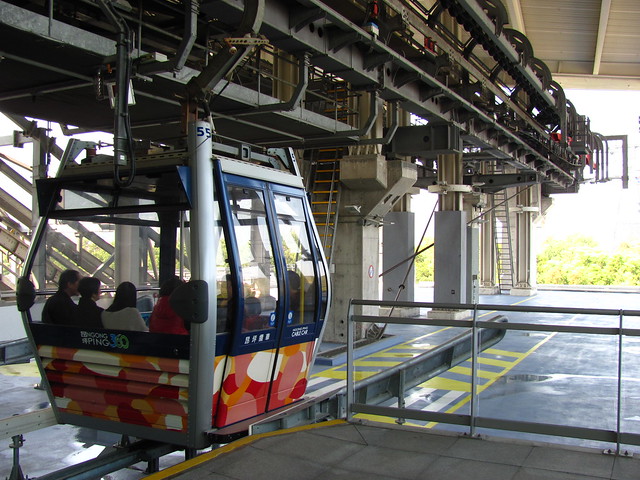
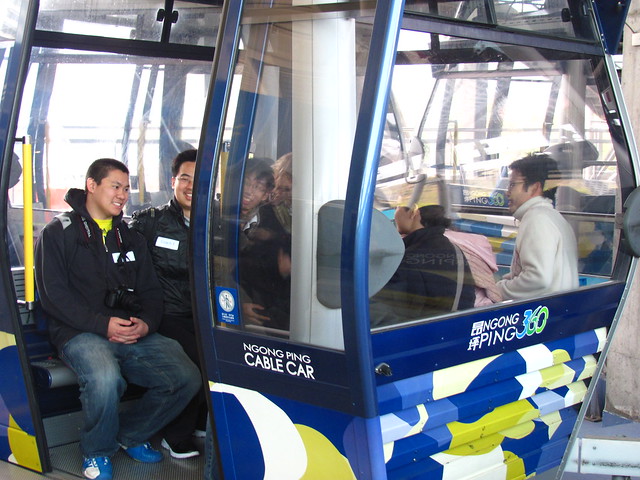
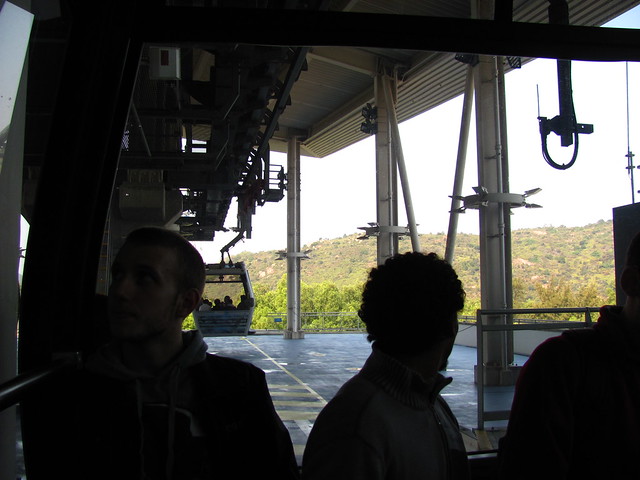
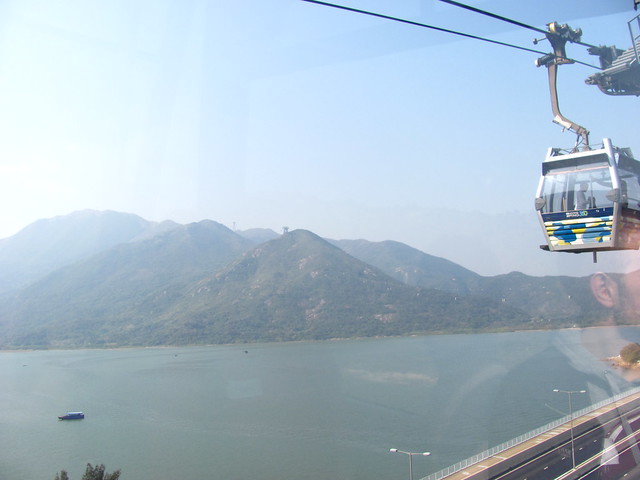
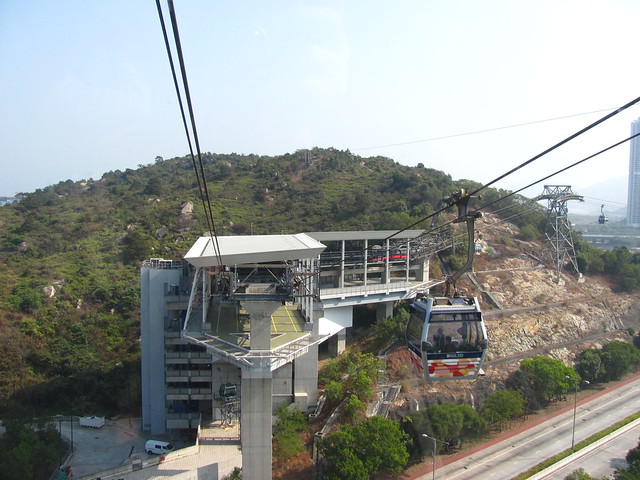
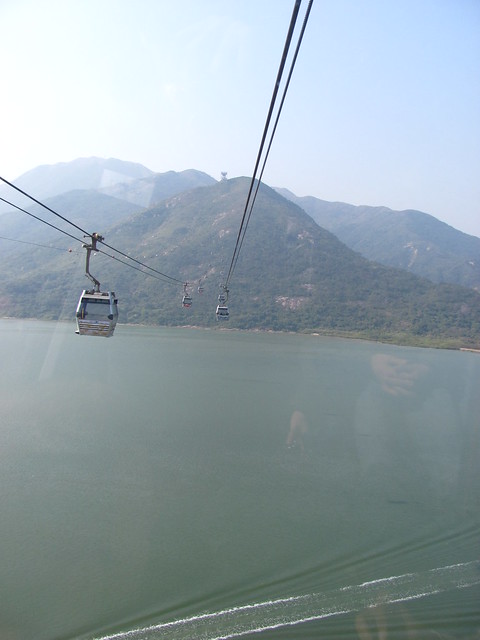
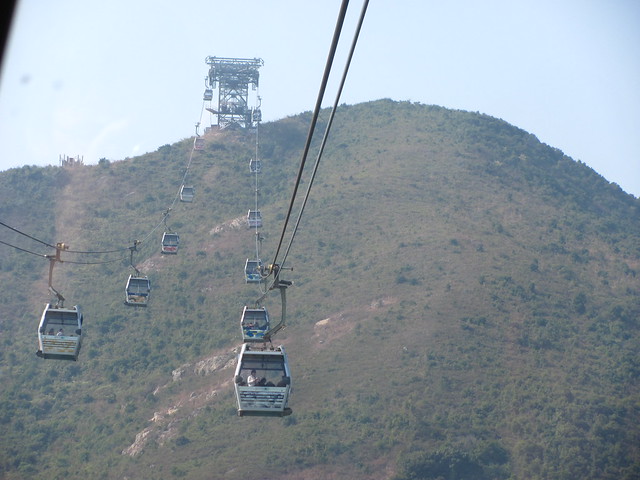
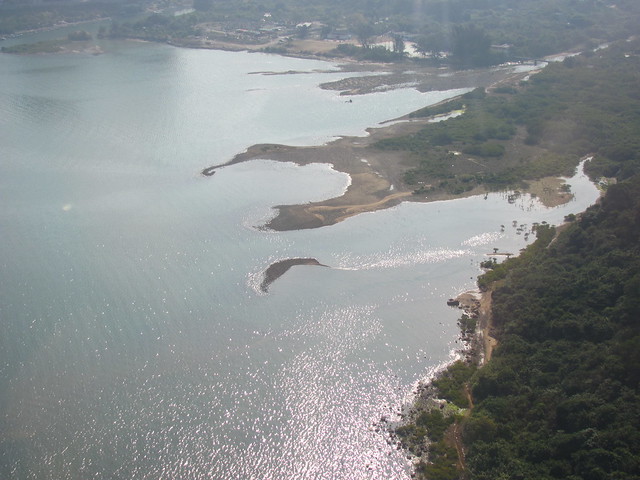 A word of advice for those with acrophobia as you approach the tall tower: Don’t look back!
A word of advice for those with acrophobia as you approach the tall tower: Don’t look back!
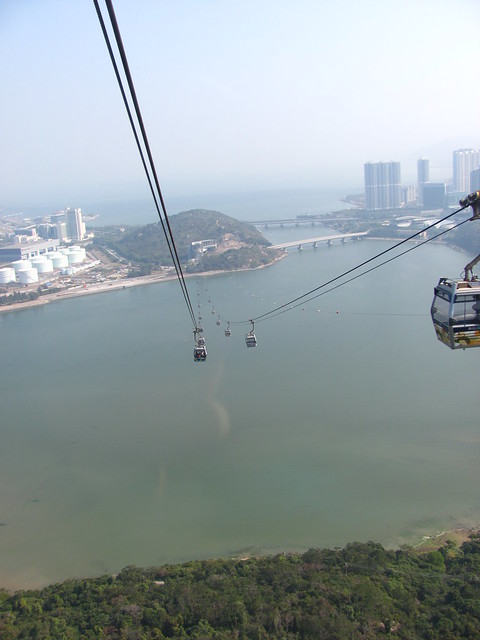
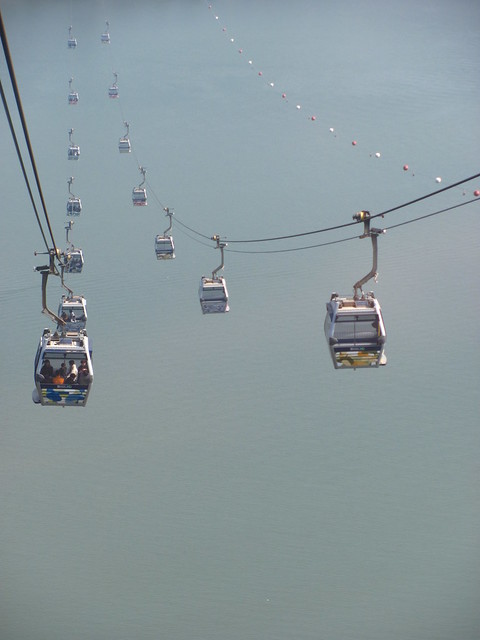
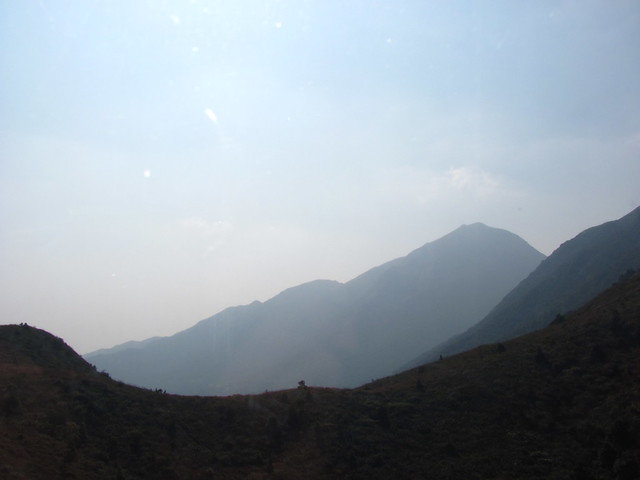
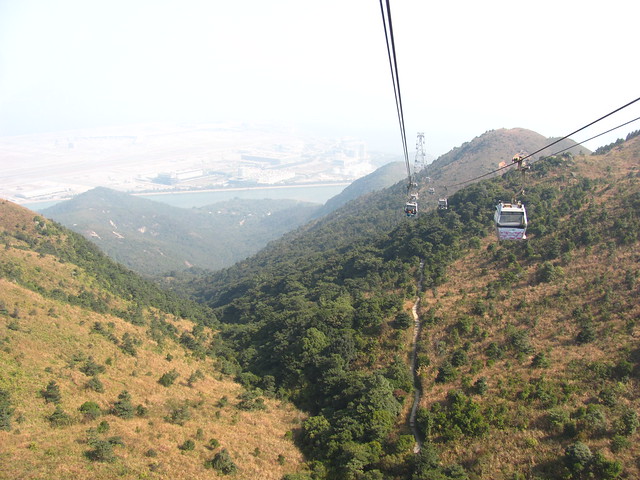 And there it is… the Big Buddha.
And there it is… the Big Buddha.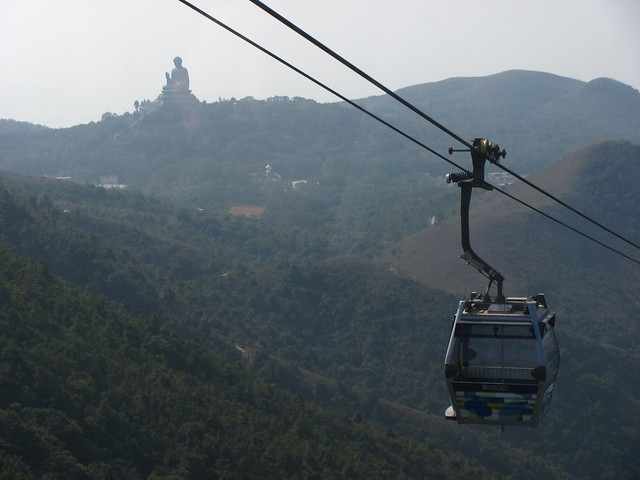
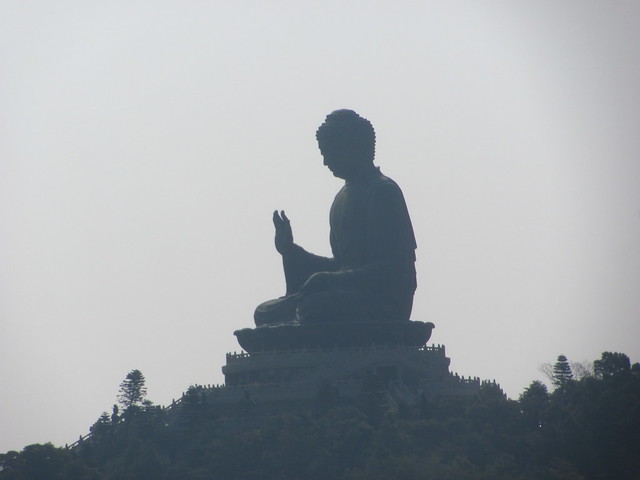
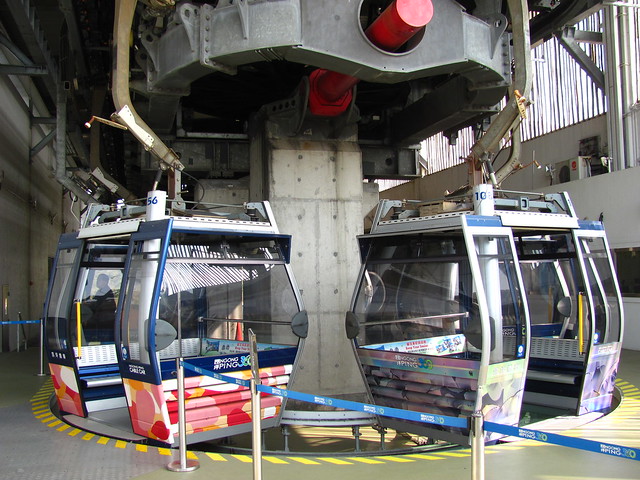 Ngong Ping Village is the tourist corridor at the summit connecting to the Po Lin Monastery and Tian Tan Buddha. It essentially feels like Buddhaland Theme Park, complete with “traditional” themed design, a couple of paid multimedia experiences, food and beverage services offered by international franchises, gift shops, and even a colorful “fun map”. The Wikipedia article detailing the construction of Ngong Ping Village is unintentionally darkly funny, as it outlines the protests over the project made by religious and environmental groups over turning the site into a mass tourist destination. The tourism board just responded by saying it will bring in lots of jobs and revenue, and promised that the design would “preserve the tranquil atmosphere.” As many of these things go, there’s no assessment after the fact of how true that proposition was. Decide for yourself:
Ngong Ping Village is the tourist corridor at the summit connecting to the Po Lin Monastery and Tian Tan Buddha. It essentially feels like Buddhaland Theme Park, complete with “traditional” themed design, a couple of paid multimedia experiences, food and beverage services offered by international franchises, gift shops, and even a colorful “fun map”. The Wikipedia article detailing the construction of Ngong Ping Village is unintentionally darkly funny, as it outlines the protests over the project made by religious and environmental groups over turning the site into a mass tourist destination. The tourism board just responded by saying it will bring in lots of jobs and revenue, and promised that the design would “preserve the tranquil atmosphere.” As many of these things go, there’s no assessment after the fact of how true that proposition was. Decide for yourself:
Nevertheless, it’s hard to imagine this place supporting the number of tourists it sees (especially during the Lunar New Year) without a facility like this. Much like at a theme park, we quickly breezed through this entry corridor on our way to the main attractions located further back. There’s a lot of incense along the way.
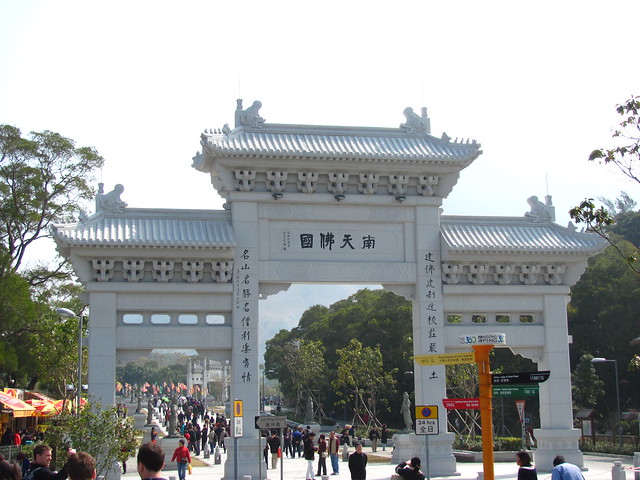
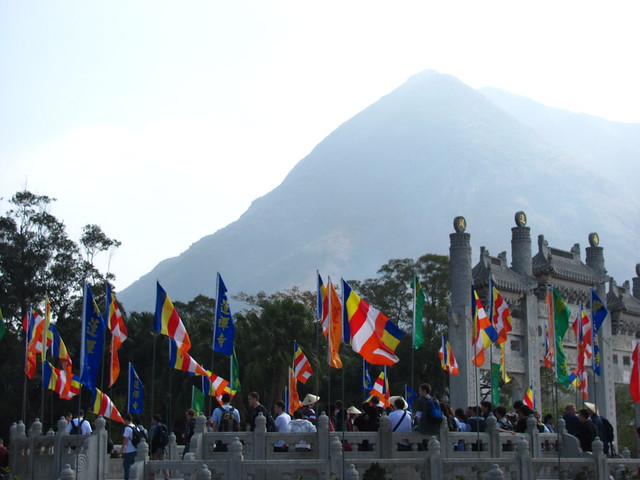
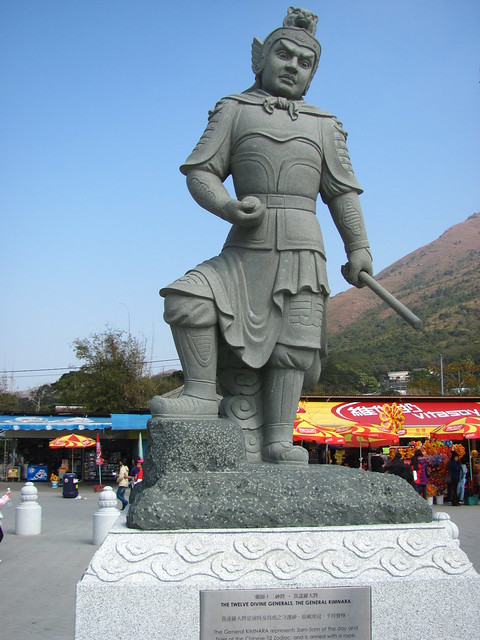
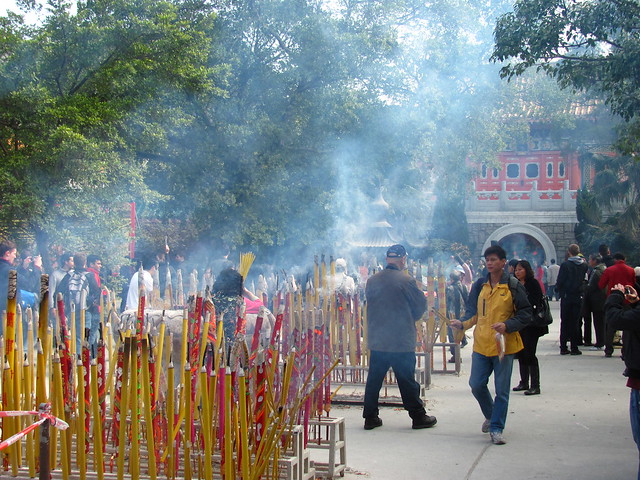
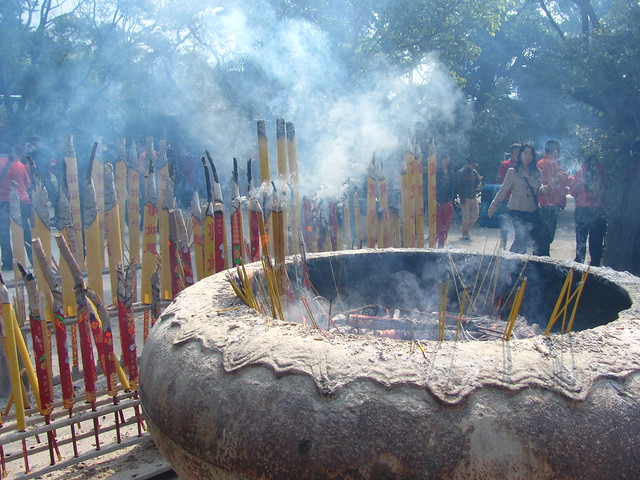
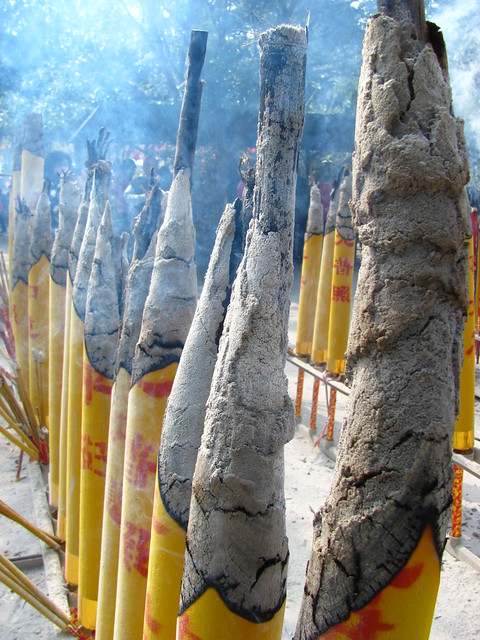
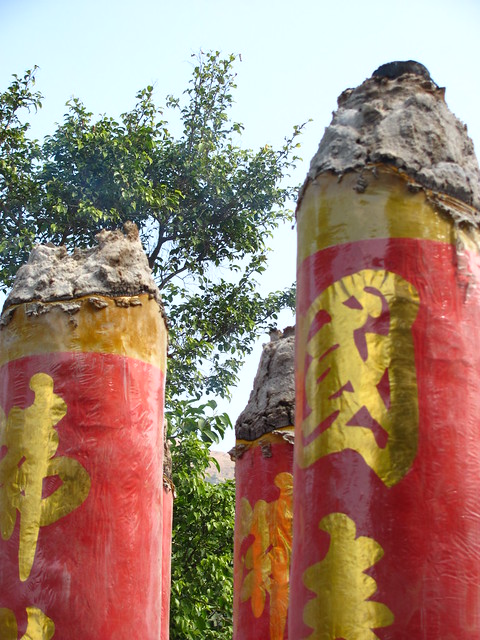
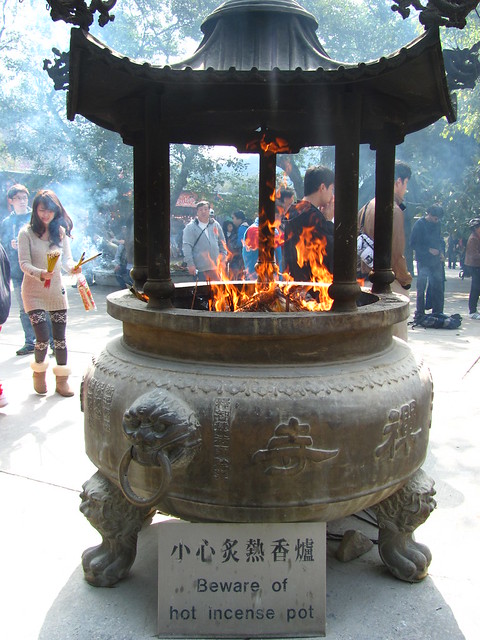 After a Chinese vegetarian lunch (I’ve never eaten so much tofu before), we took a tour around the Po Lin Monastery, where Buddhist monks were actively praying while hundreds of tourists watched through the doors.
After a Chinese vegetarian lunch (I’ve never eaten so much tofu before), we took a tour around the Po Lin Monastery, where Buddhist monks were actively praying while hundreds of tourists watched through the doors.
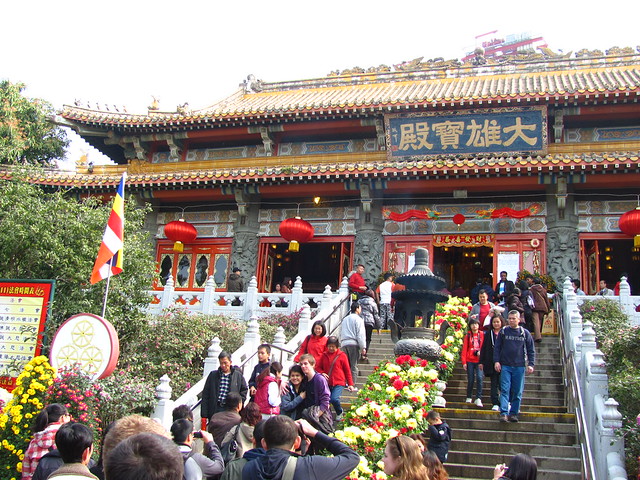
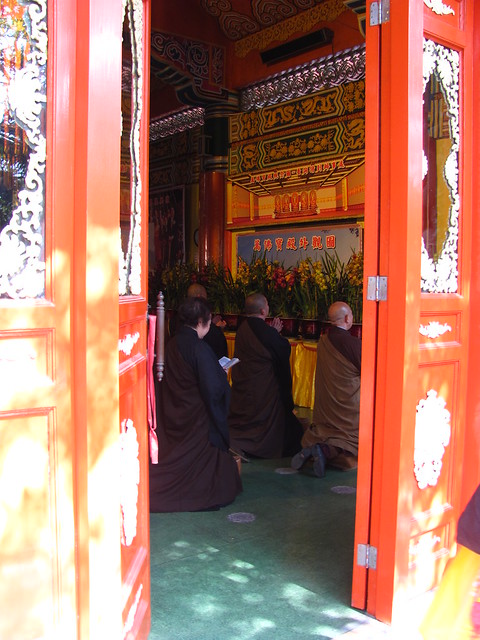
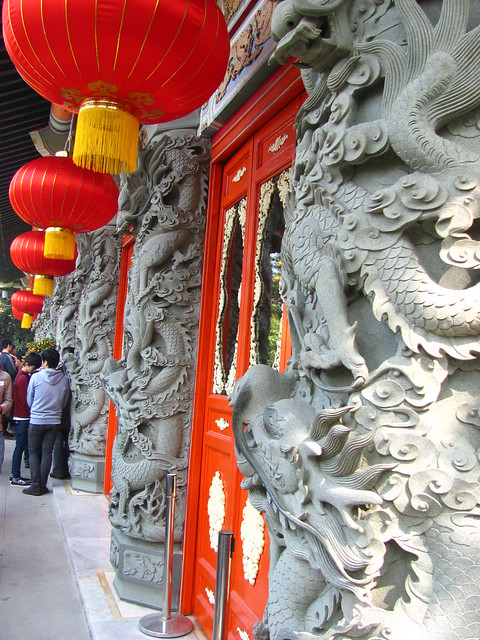

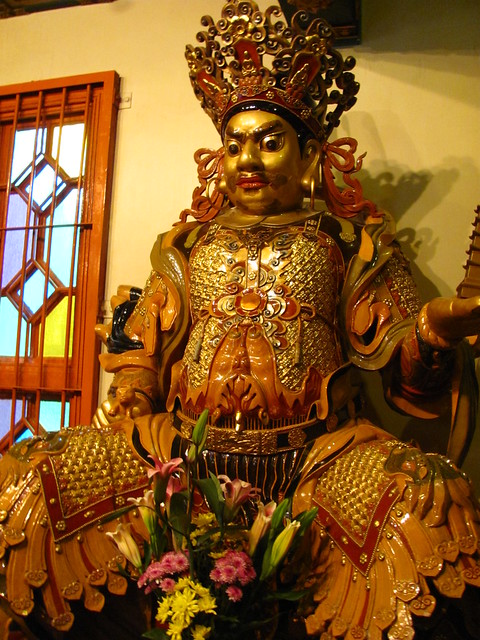
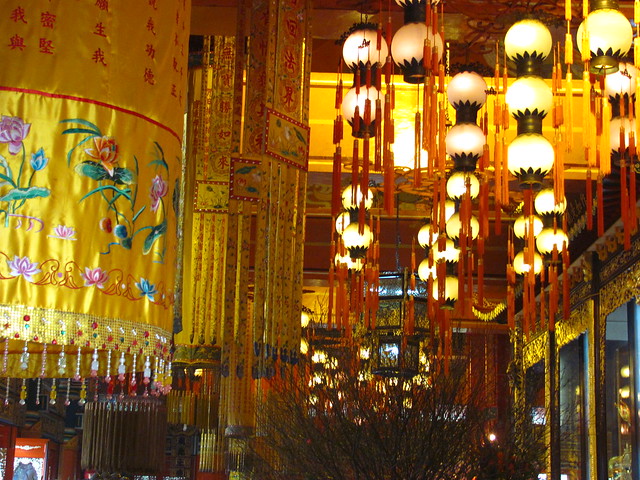
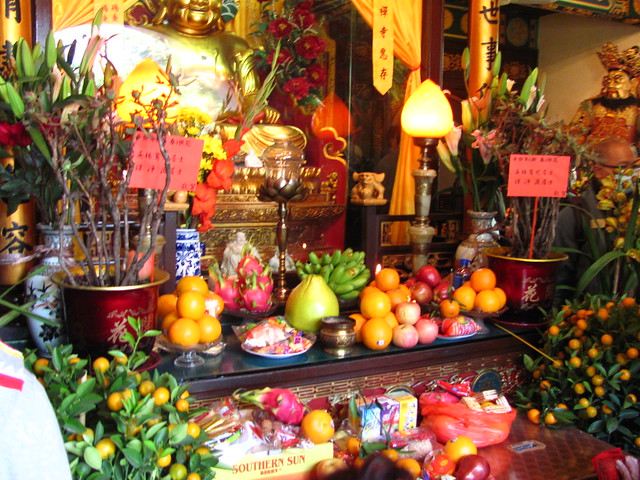
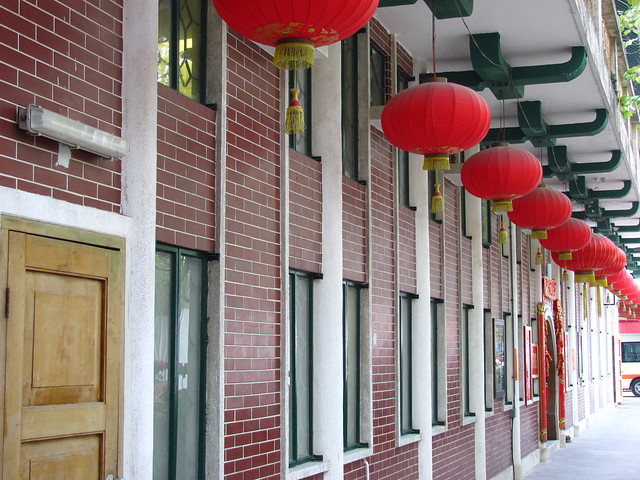 Finally, the main attraction: hike up to see the Tian Tan Buddha up close! While the monastery has been here in one form or another for over 100 years, the Big Buddha itself had only been there for less than 20 years at the time of my visit. It’s interesting to observe that these sorts of large scale spiritual symbols don’t belong strictly to past generations but still clearly have relevance in the modern era.
Finally, the main attraction: hike up to see the Tian Tan Buddha up close! While the monastery has been here in one form or another for over 100 years, the Big Buddha itself had only been there for less than 20 years at the time of my visit. It’s interesting to observe that these sorts of large scale spiritual symbols don’t belong strictly to past generations but still clearly have relevance in the modern era.
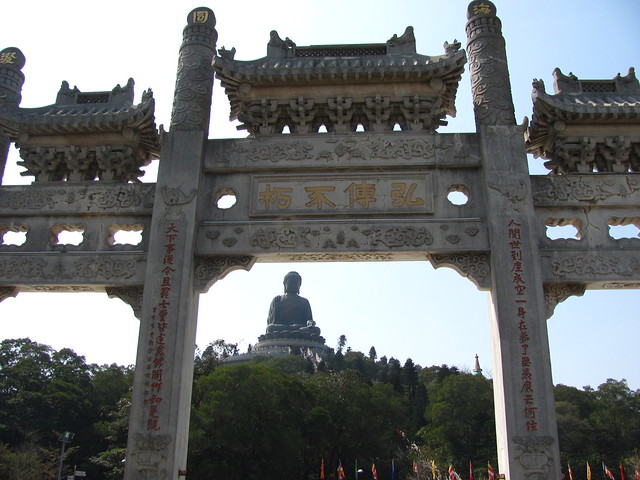
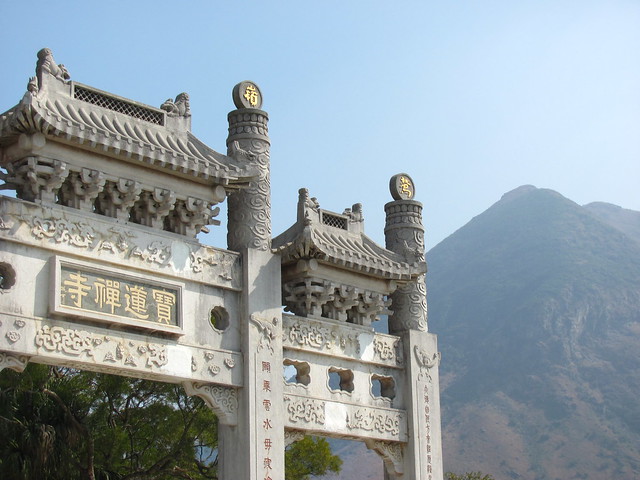
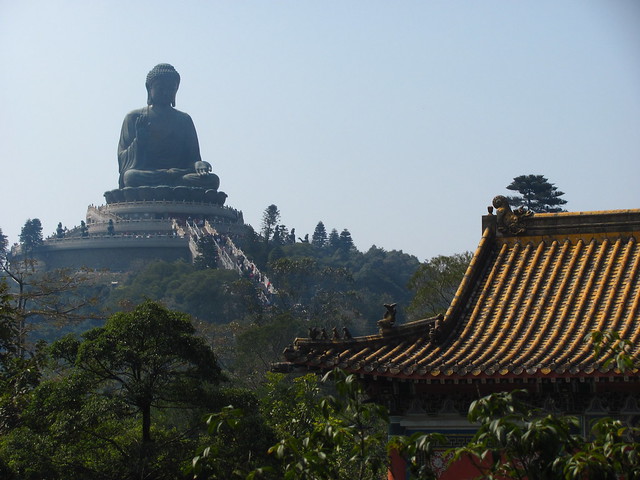
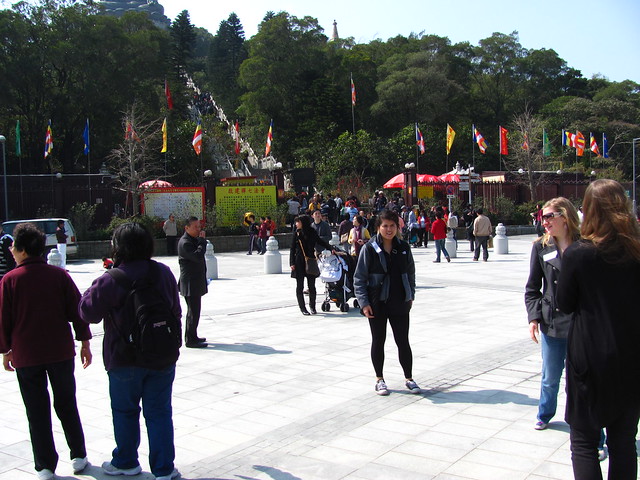
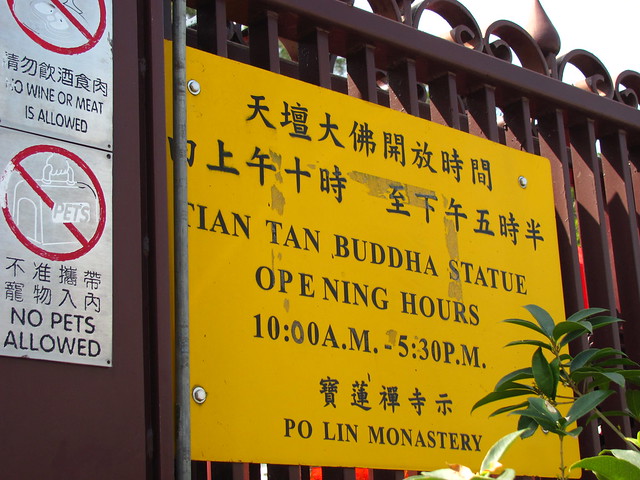
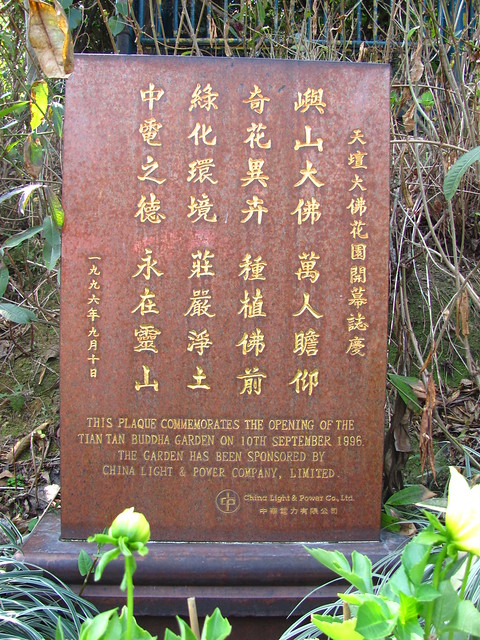
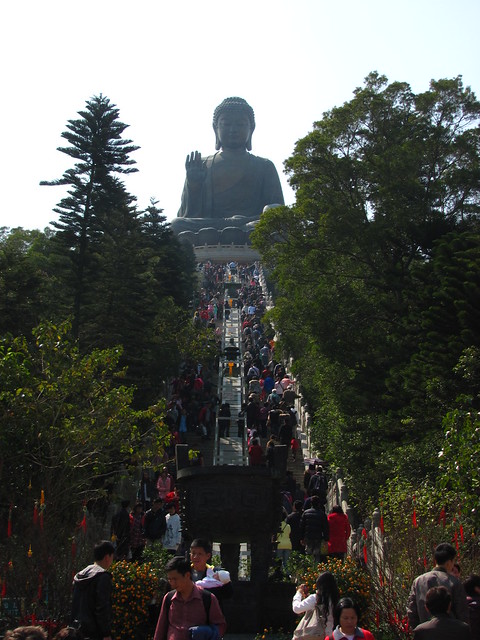 It’s a long climb up. 268 stairs.
It’s a long climb up. 268 stairs.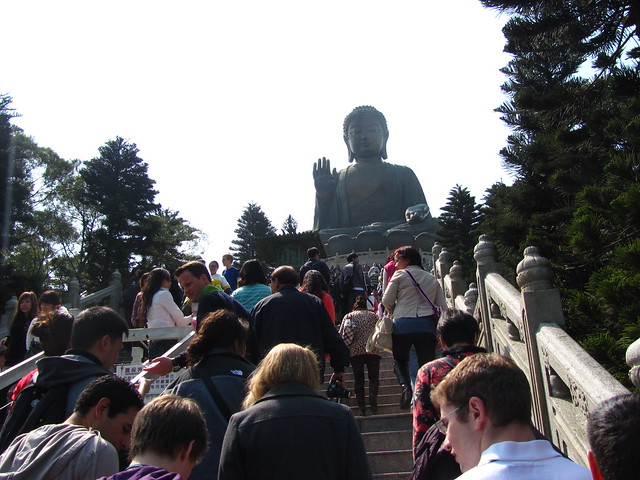
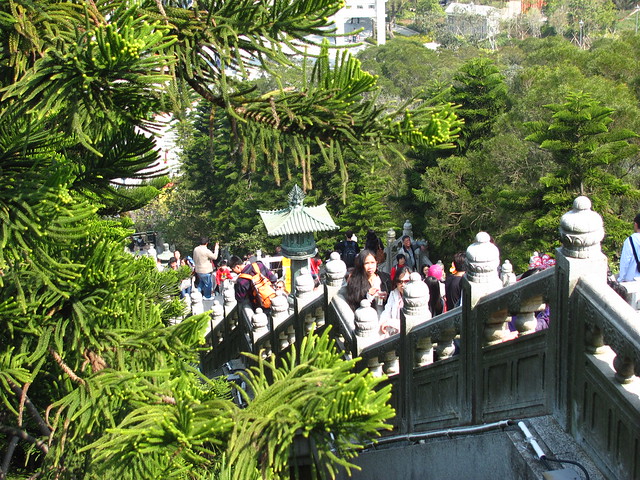
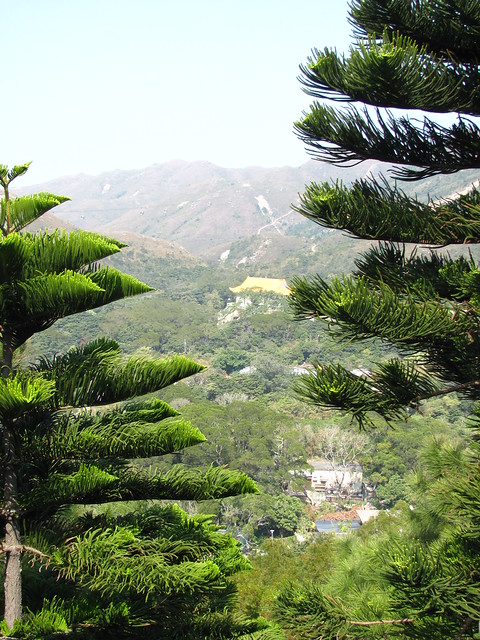 Finally arrived! While the Big Buddha might be better viewed from a distance, there’s enough else to view up here (including the surrounding mountainside) that the hike was worthwhile.
Finally arrived! While the Big Buddha might be better viewed from a distance, there’s enough else to view up here (including the surrounding mountainside) that the hike was worthwhile.
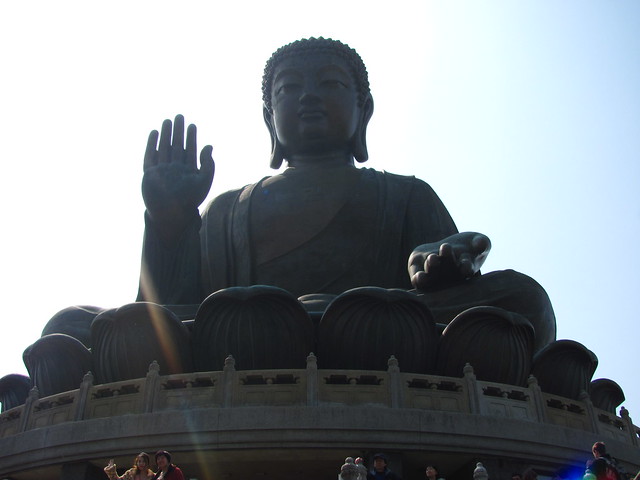 t
t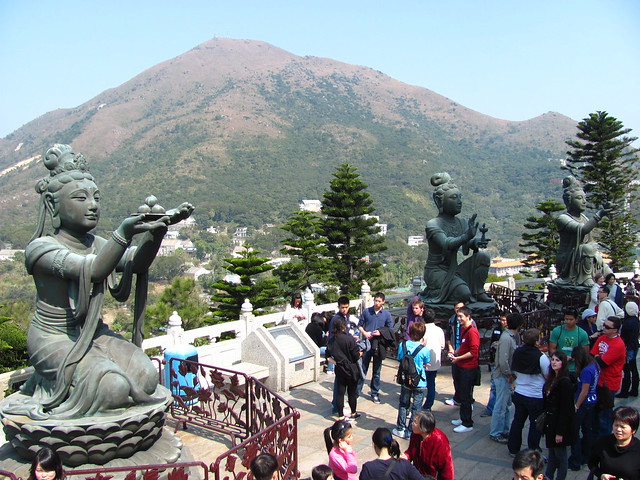
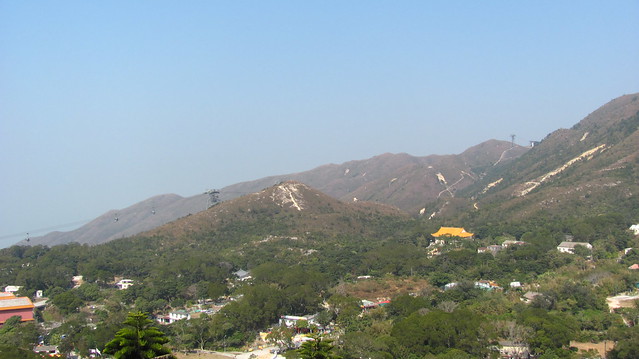
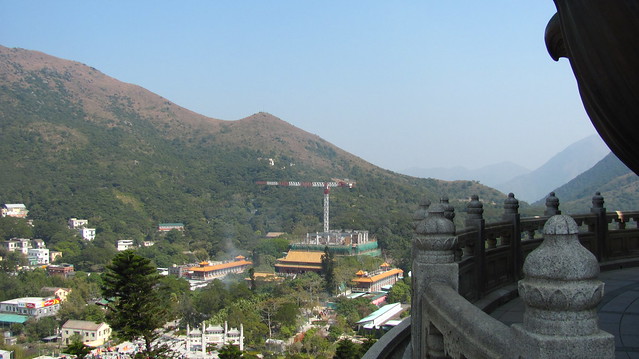
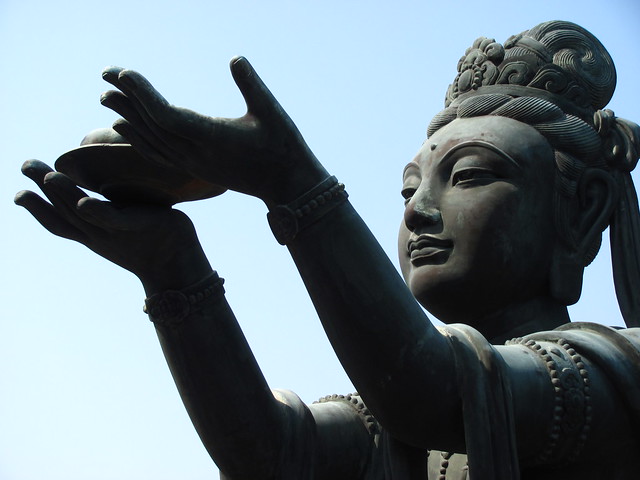
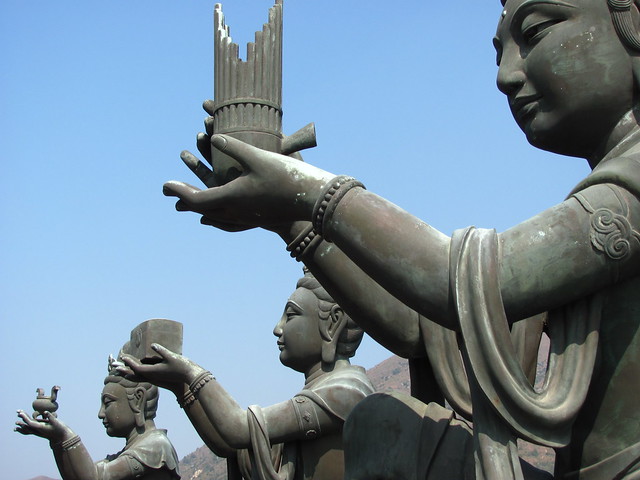
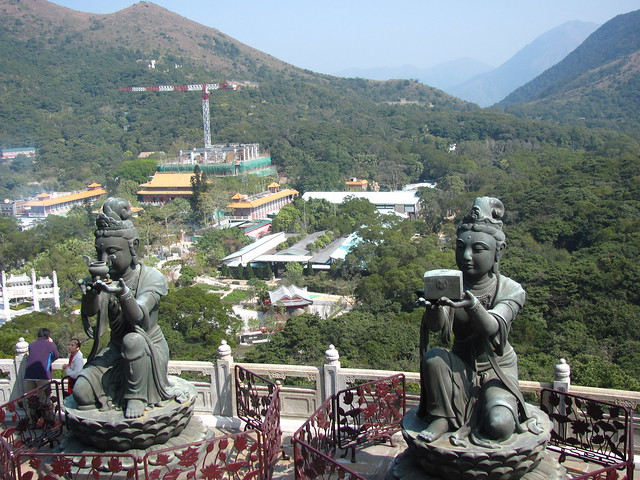
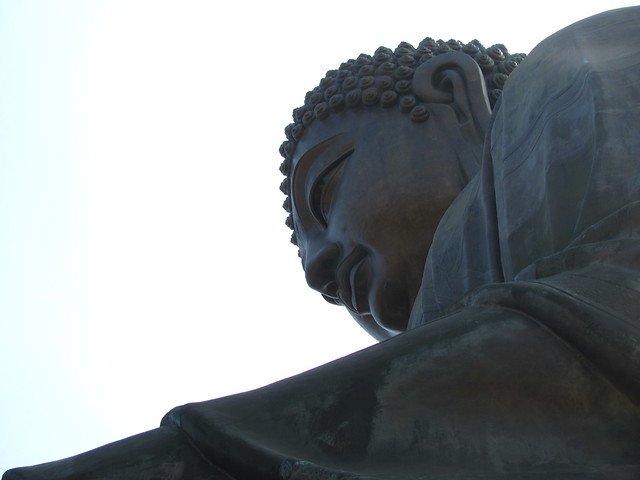 And time to go back down…
And time to go back down…
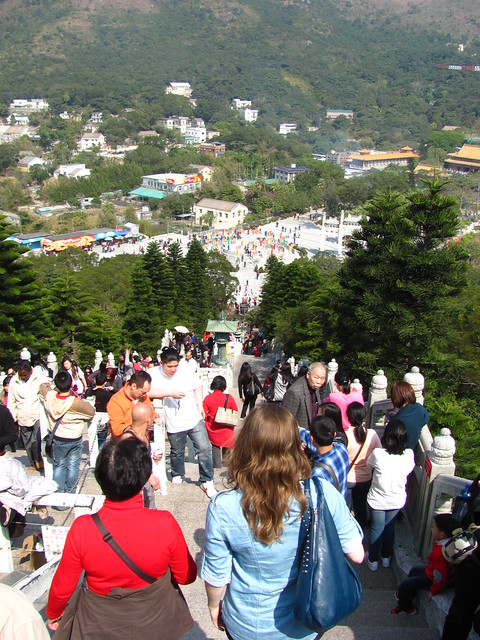
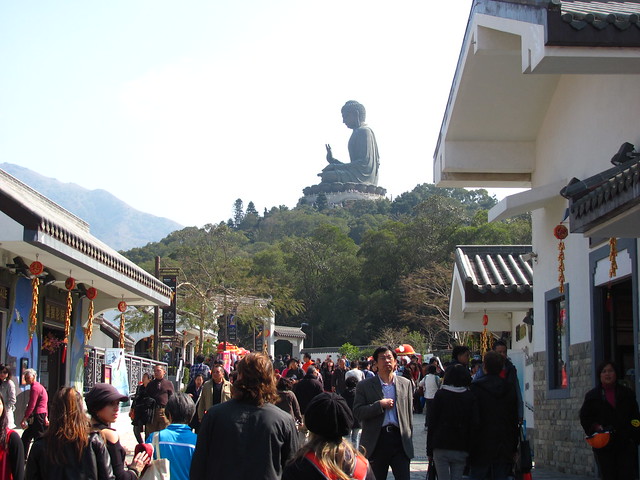 From Ngong Ping we then took a charter bus down to the far western coast of Lantau Island for our second primary stop: the Tai O fishing village. Like many fishing villages around the world, Tai O still hosts an active fishing community even as it increasingly caters to tourists fascinated by the village’s salty rustic character, in this case featuring unique stilt houses called pang uks built out over the water. We were running a bit late, as our tour included reservations for a dolphin watching boat tour around the harbor.
From Ngong Ping we then took a charter bus down to the far western coast of Lantau Island for our second primary stop: the Tai O fishing village. Like many fishing villages around the world, Tai O still hosts an active fishing community even as it increasingly caters to tourists fascinated by the village’s salty rustic character, in this case featuring unique stilt houses called pang uks built out over the water. We were running a bit late, as our tour included reservations for a dolphin watching boat tour around the harbor.
Unfortunately there were no dolphins to spot on this tour. (Ditto for the other boats that our group took.) Not sure what the average success rate is or if there are times of day the dolphins tend to be active. Still, it was refreshing to get out on the water, and the search for dolphins across the water’s surface could make random bits of flotsam seem very interesting for a brief moment.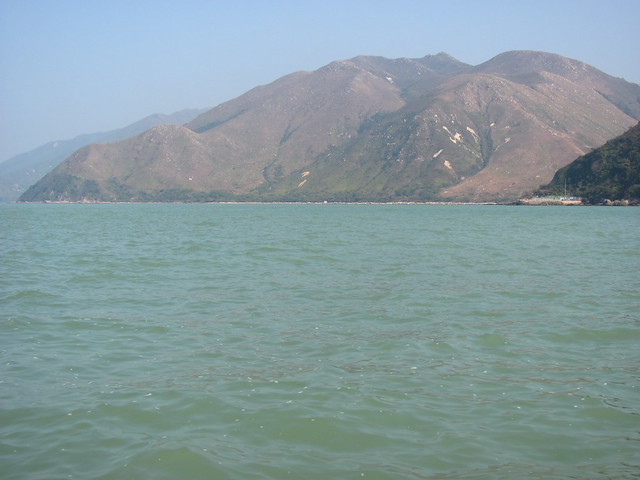
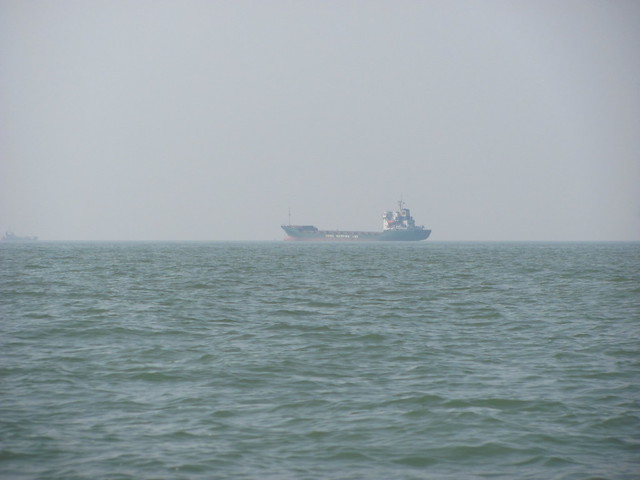
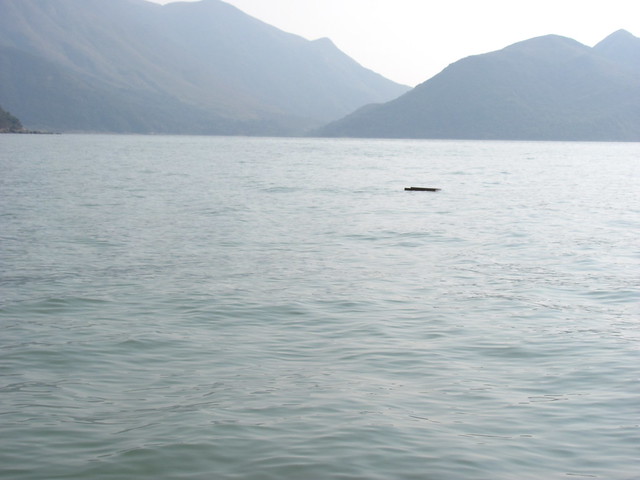
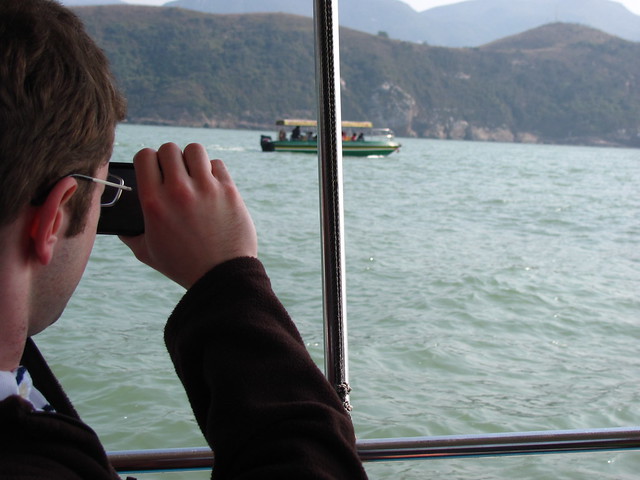
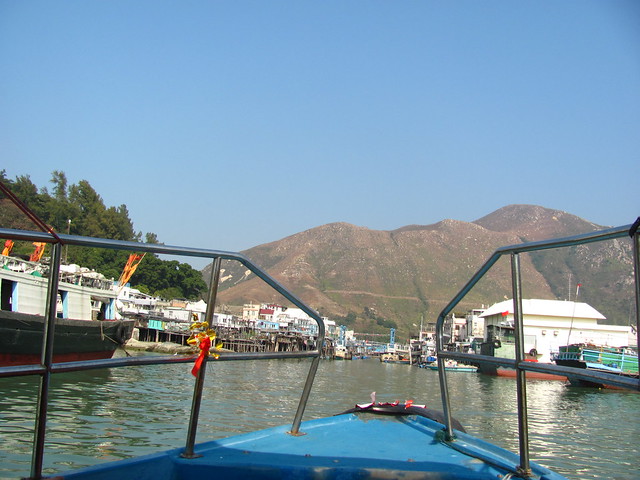
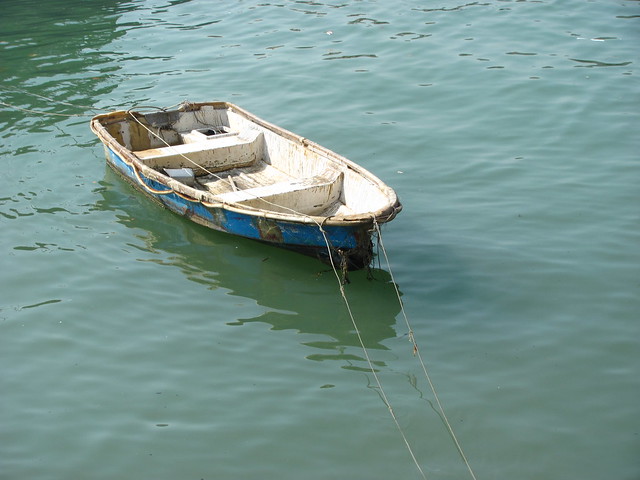 Back on land, we had almost an hour to explore the rest of Tai O. The town is an overload for more than one of the senses, from the densely cluttered shops and homes with festive lantern lights threaded overhead, to the cacophonous chatter of tourists on the high holidays, to the pervasive briny smell of freshly caught fish. (One in particular was so fresh its discarded bloody head was still breathing. I’m glad we ate vegetarian earlier that day.)
Back on land, we had almost an hour to explore the rest of Tai O. The town is an overload for more than one of the senses, from the densely cluttered shops and homes with festive lantern lights threaded overhead, to the cacophonous chatter of tourists on the high holidays, to the pervasive briny smell of freshly caught fish. (One in particular was so fresh its discarded bloody head was still breathing. I’m glad we ate vegetarian earlier that day.)
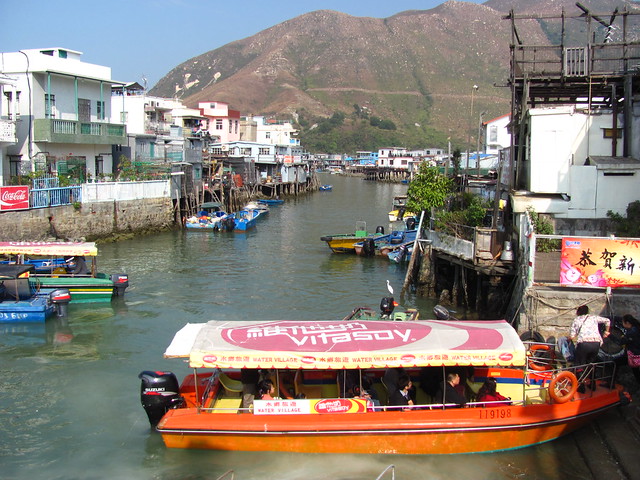
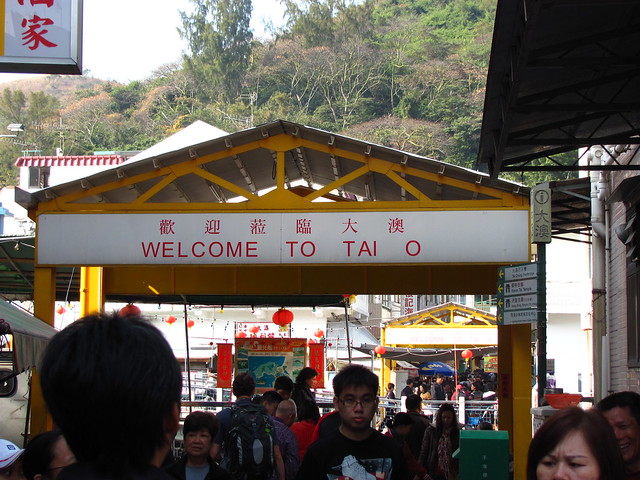
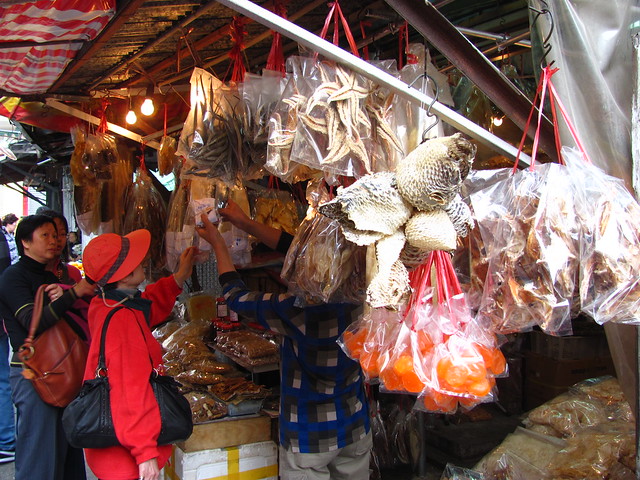
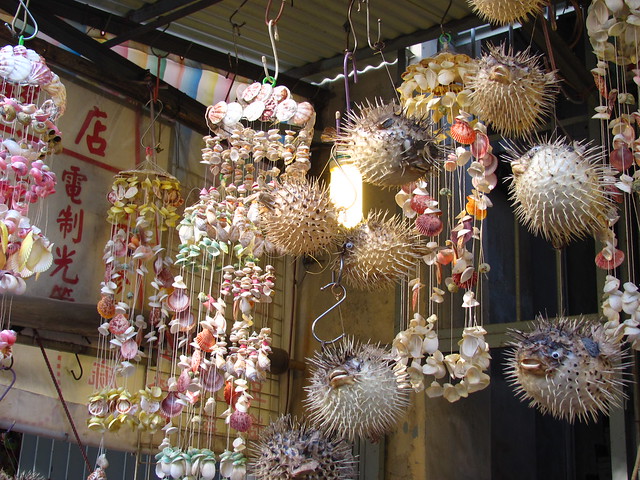
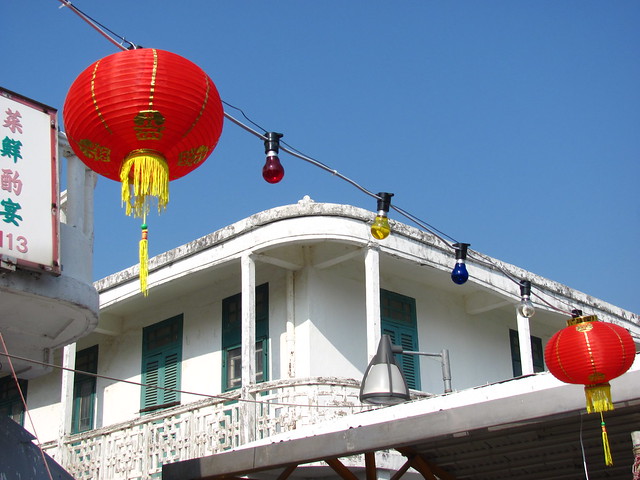
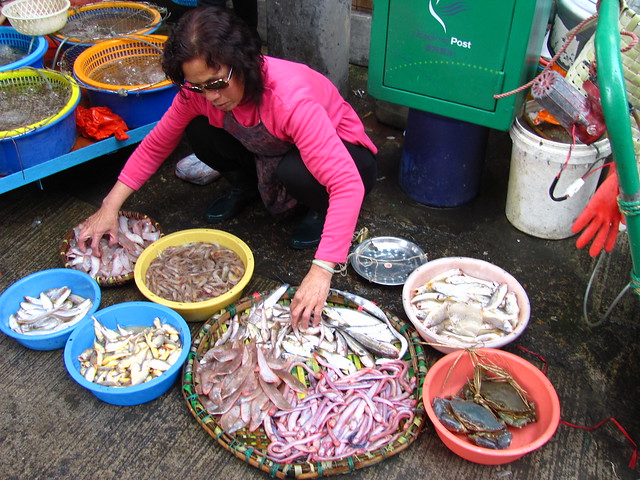
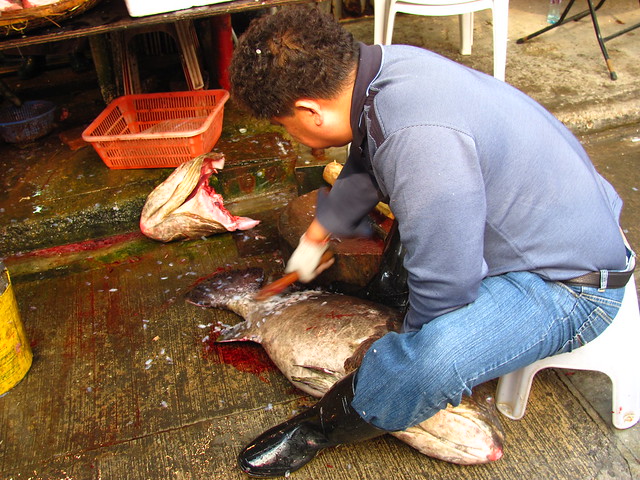 Venturing away from the town center, we found a trail along a narrow inlet leading to an isolated temple and a tiny makeshift shrine.
Venturing away from the town center, we found a trail along a narrow inlet leading to an isolated temple and a tiny makeshift shrine.
We climbed back aboard the charter bus to return to Hong Kong, with our much-too-large bus navigating an extremely narrow, winding route along steep drop-offs, an unexpectedly terrifying conclusion to the day. Once we got back on the main roads, before crossing back to Kowloon we made a stop at a small visitor’s plaza between the Ting Kau Bridge and Tsing Ma Bridge, at the time both among the world’s longest cable-stayed and suspension bridges, respectively.
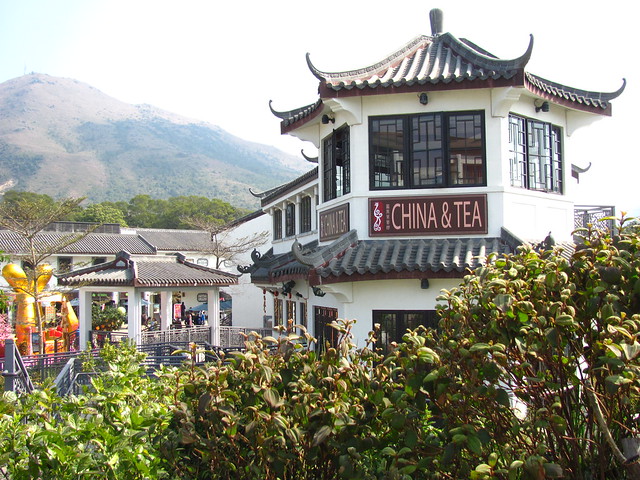
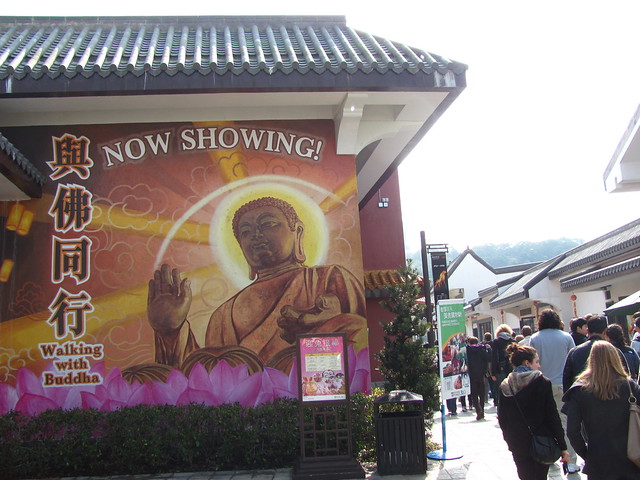
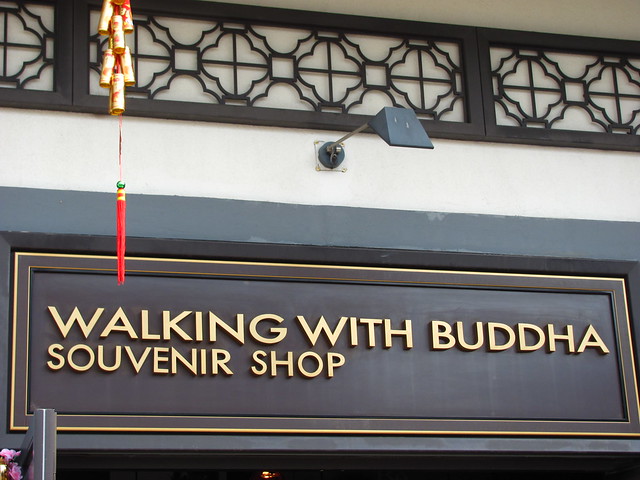

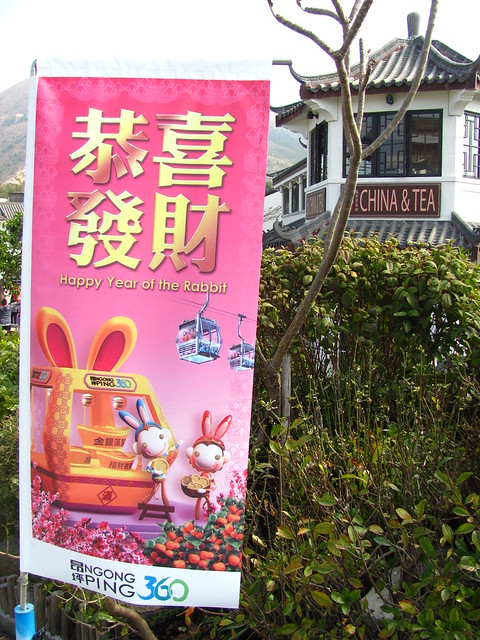
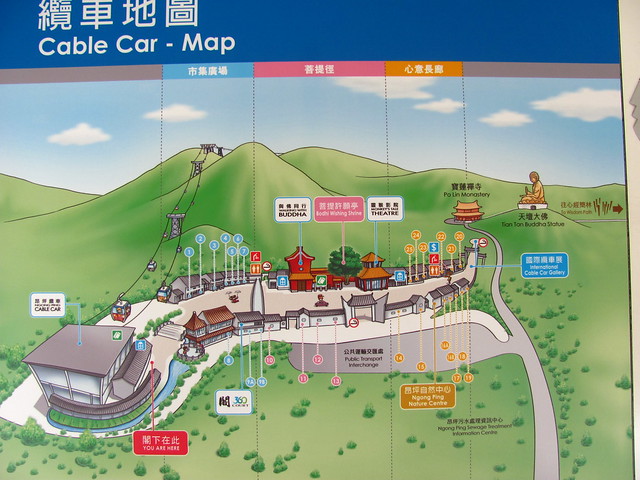
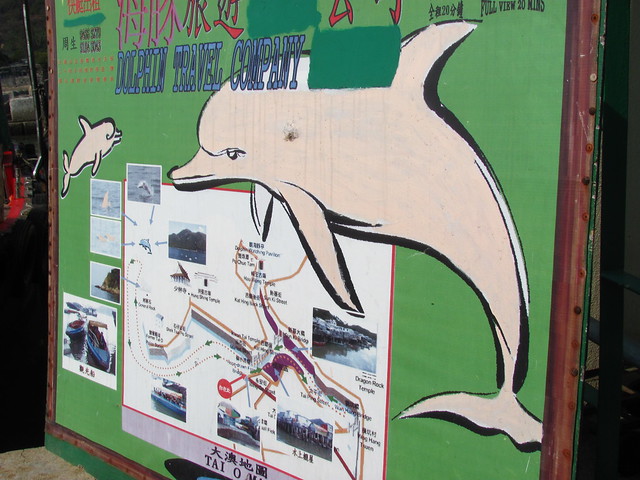
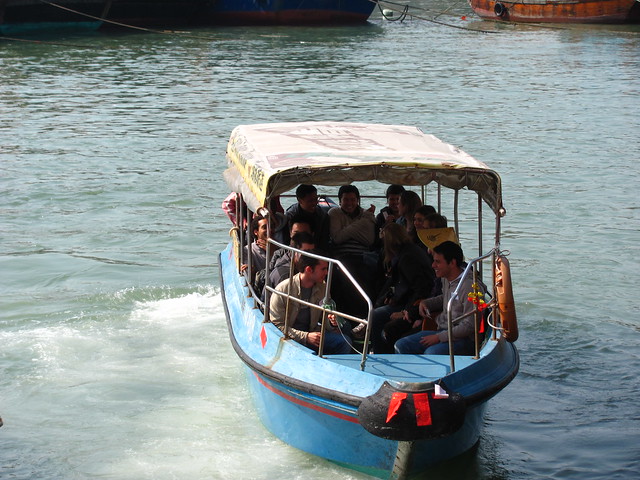
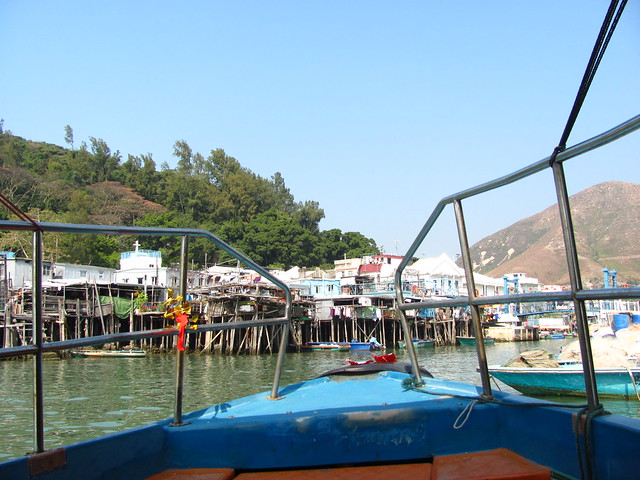
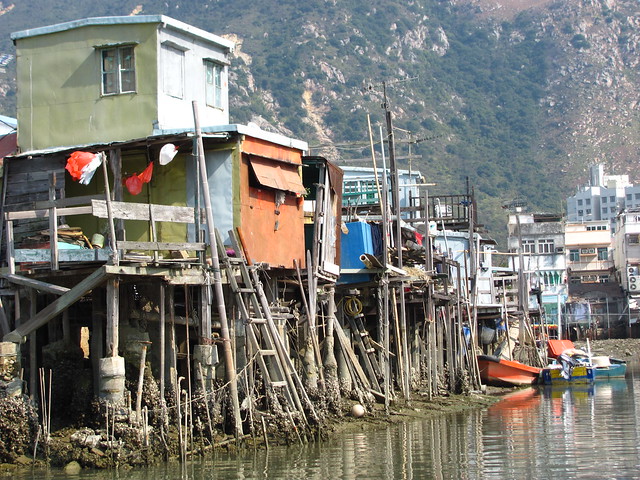
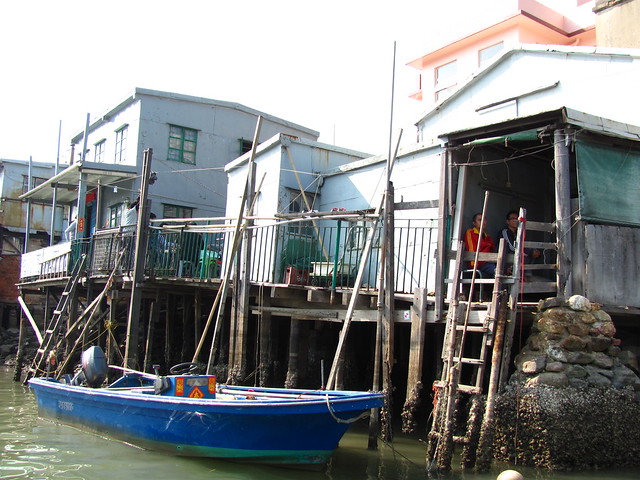
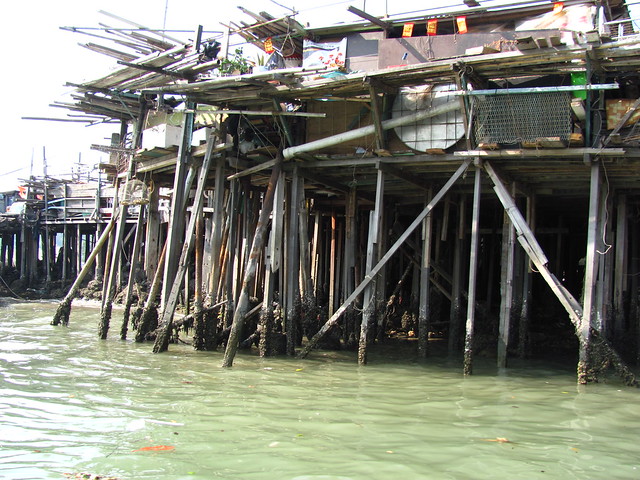
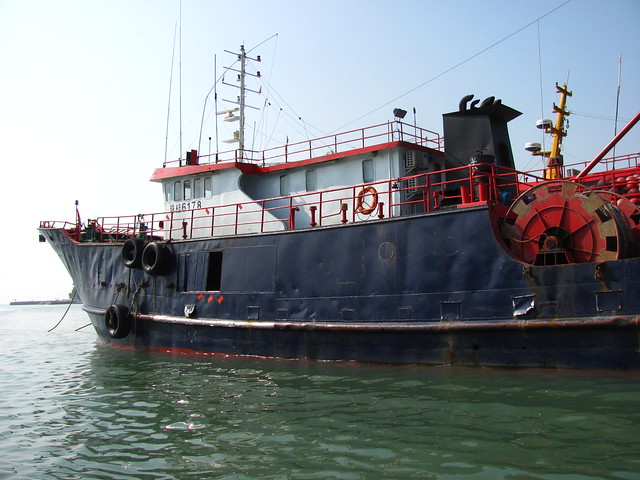
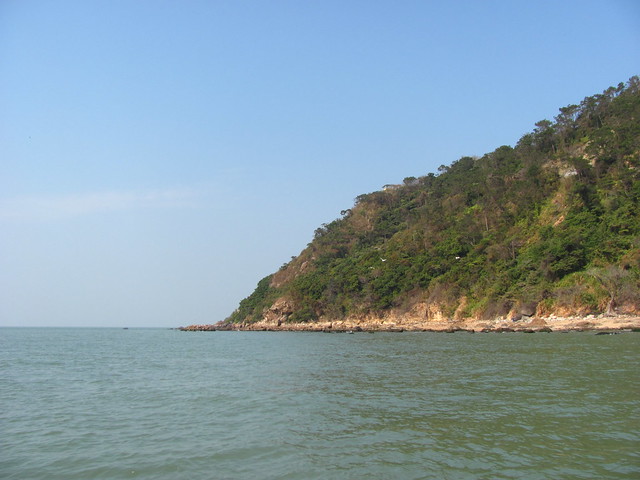
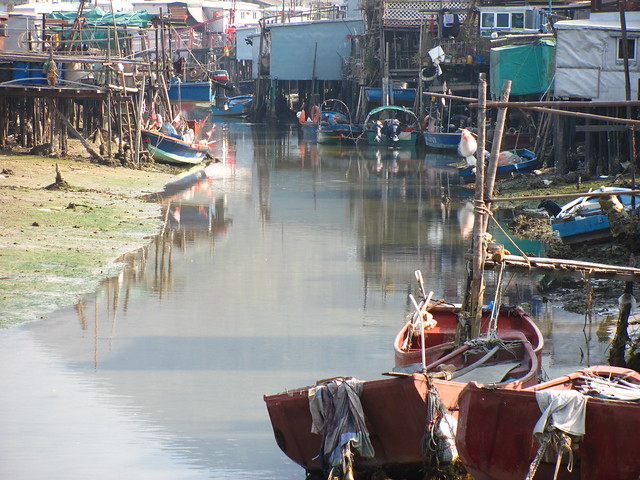
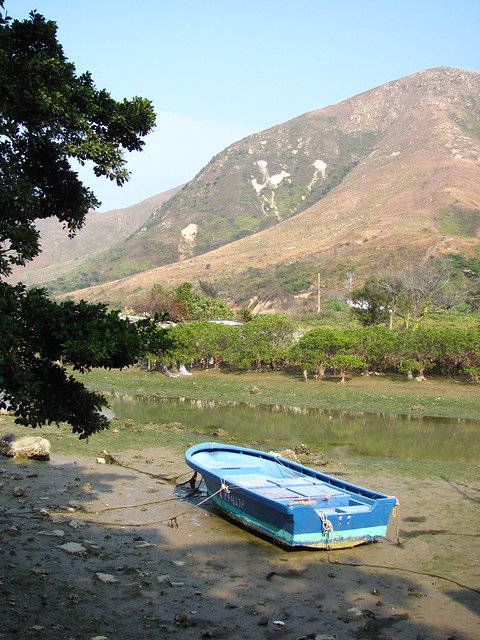
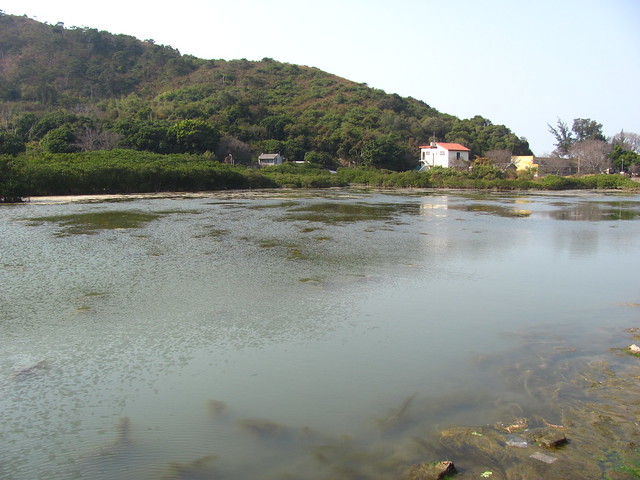
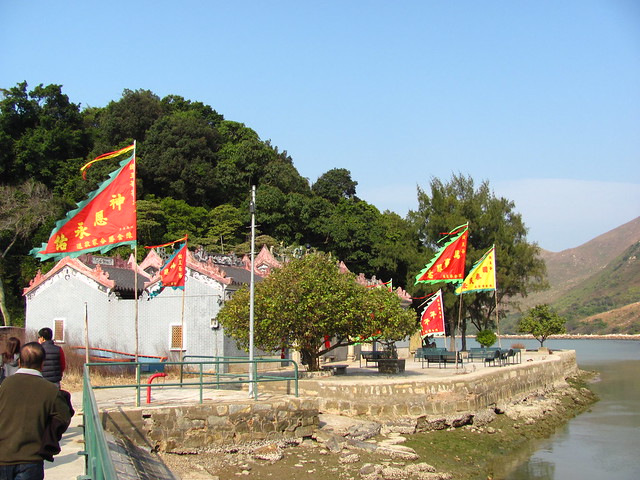
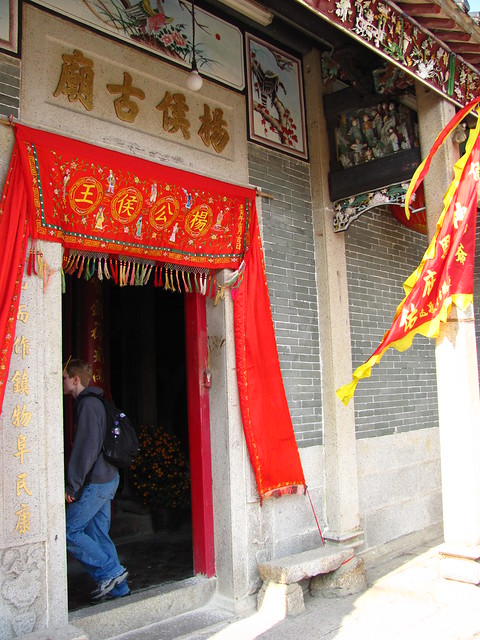
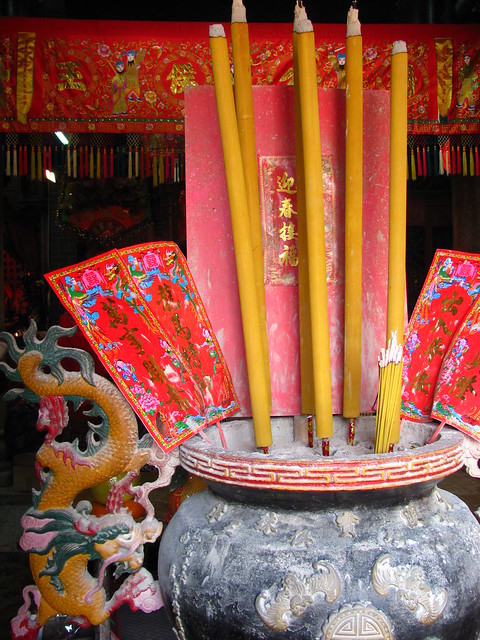
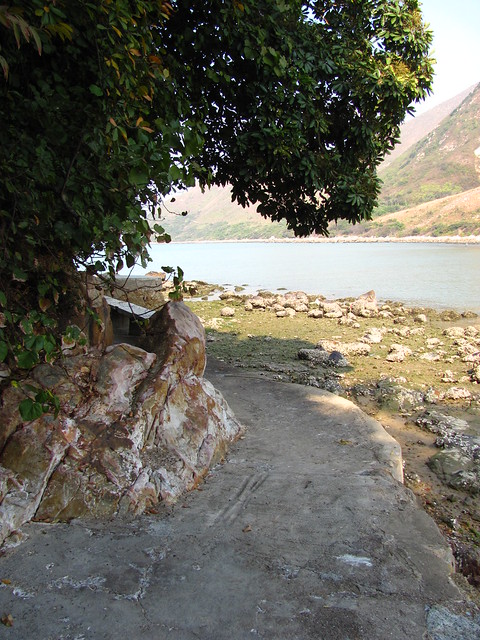
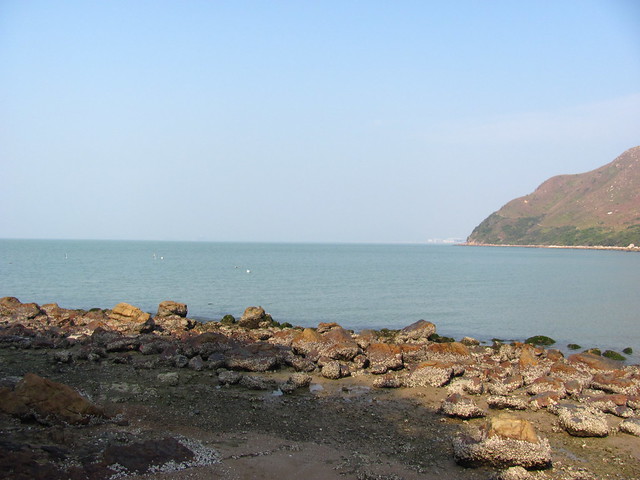
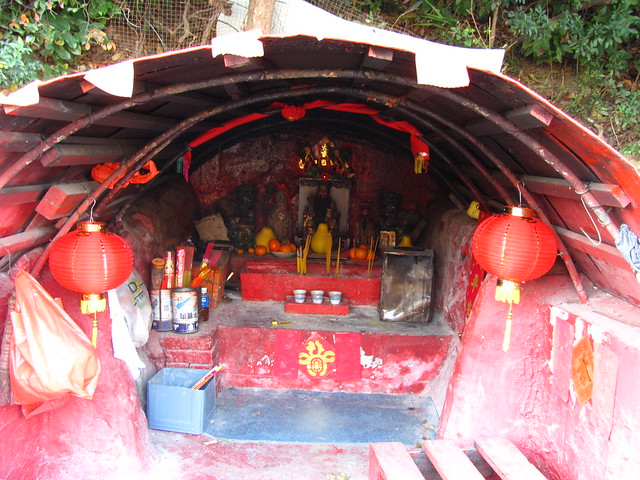
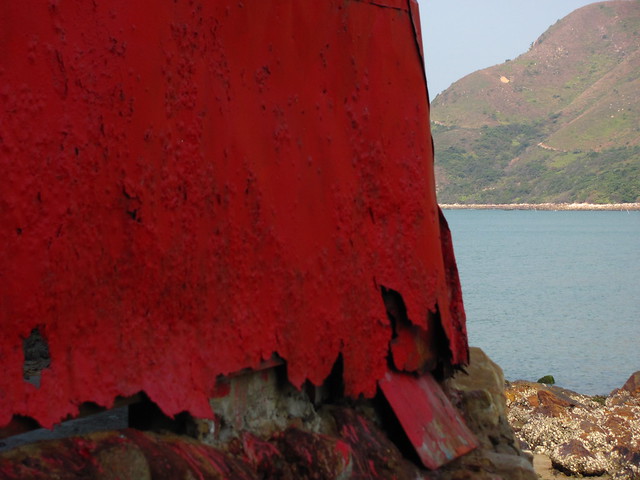
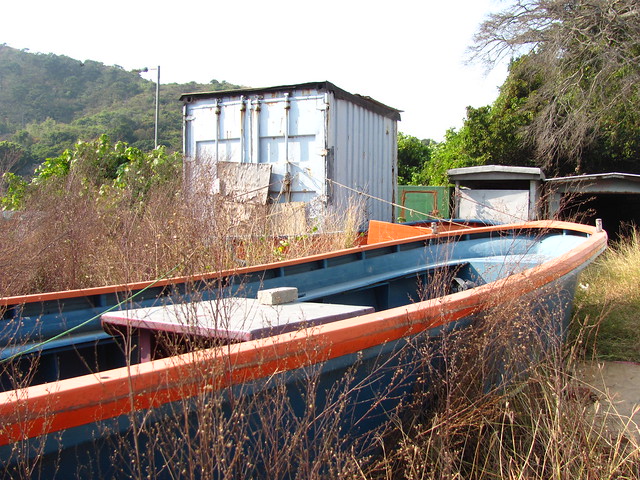
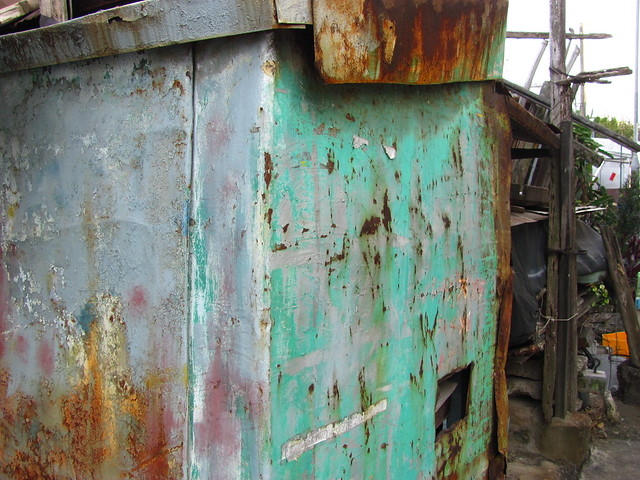
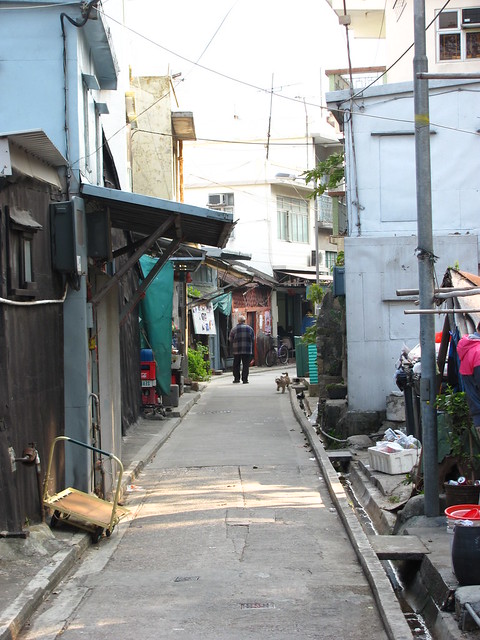
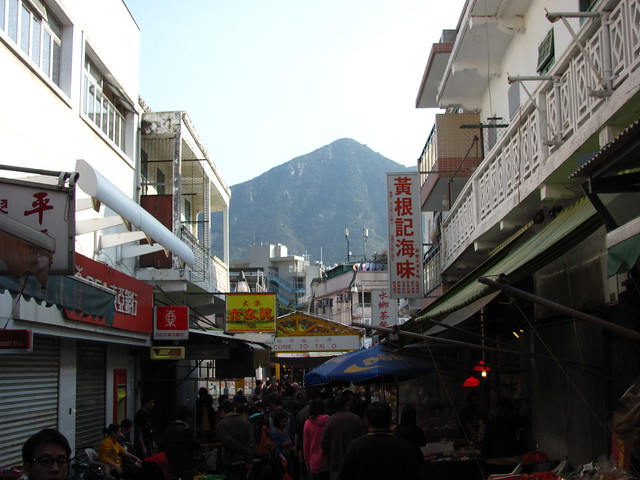
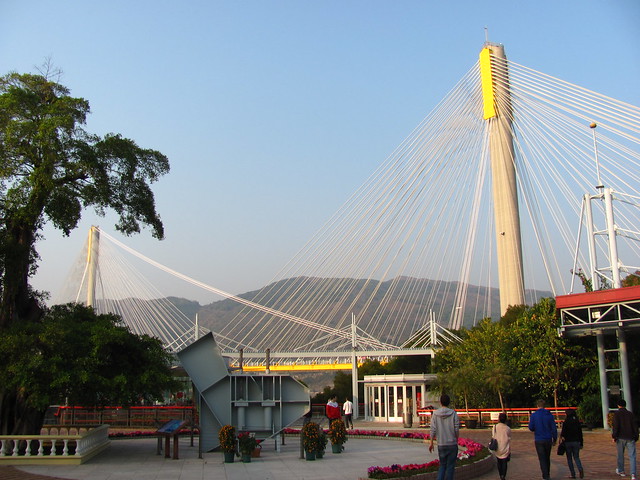
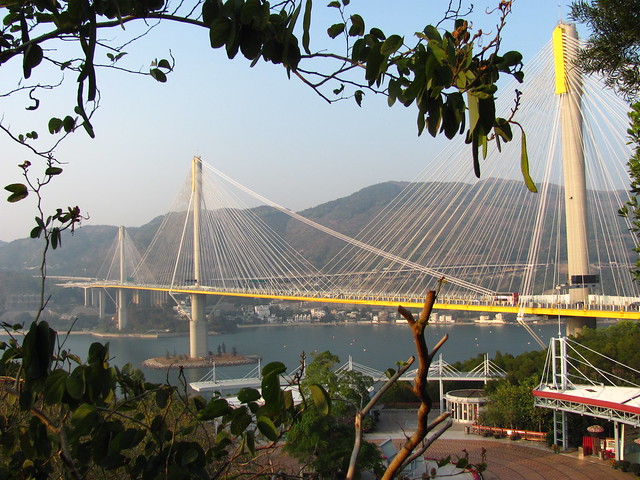
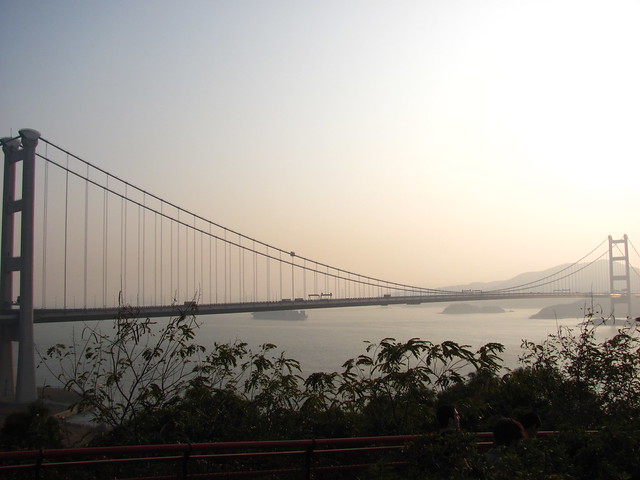
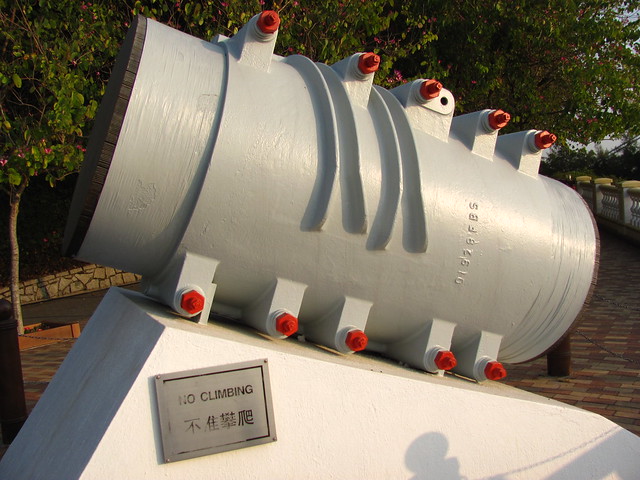
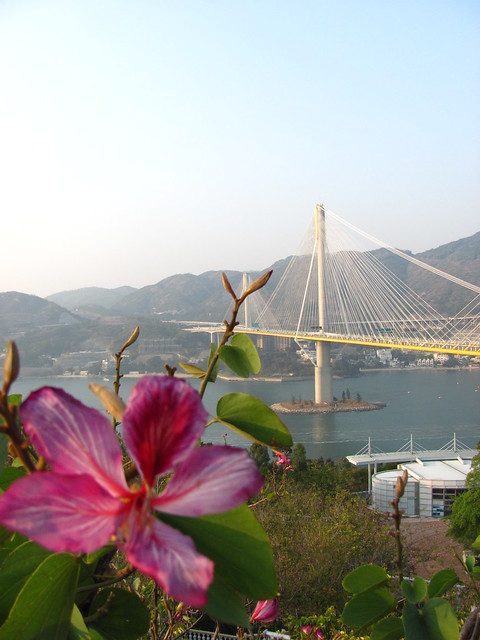
Comments